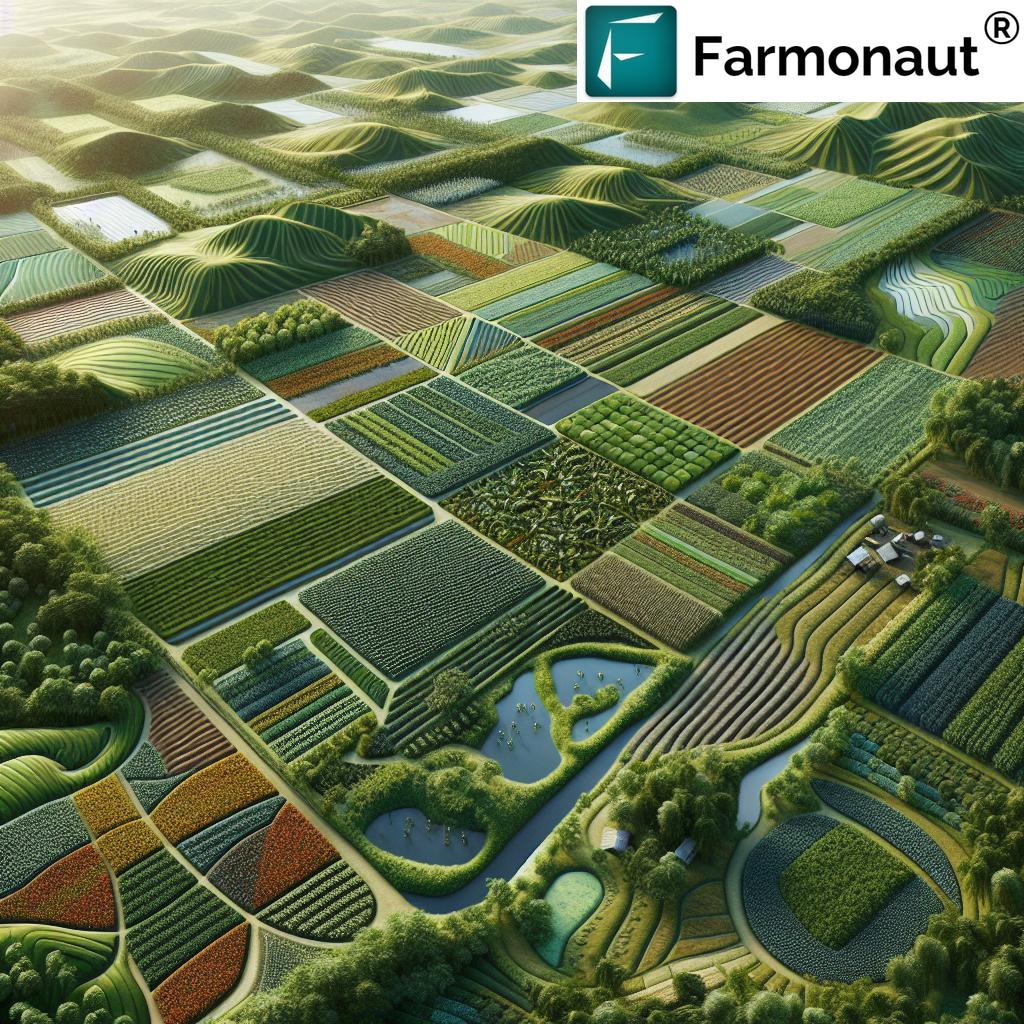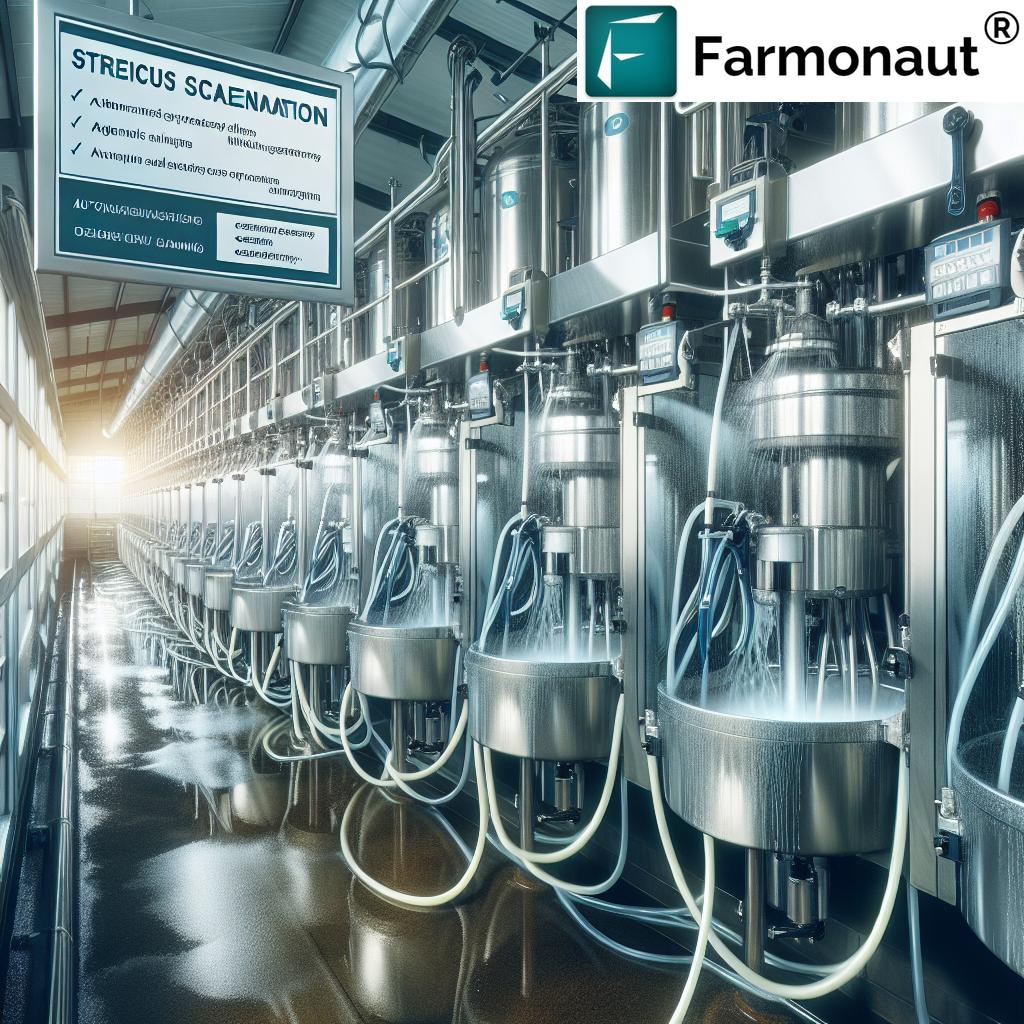10 Shocking Solutions for Agricultural Problems!

“Precision irrigation can reduce water usage in farming by up to 50%, boosting sustainability and crop yields.”
Introduction: The Context of Sustainable Agriculture Solutions
The challenges facing agriculture—spanning farming, forestry, and ecosystem management—have never been more urgent. From the unpredictability of climate change and increasing soil degradation to threats of deforestation, food security, and rising economic pressures, our global agricultural sector is at a crossroads. Sustainable agriculture solutions are no longer optional; they are essential to ensure our farming practices support both current and future generations.
As we examine agricultural challenges and solutions, we must leverage innovation and sustainability across all operations. Integrating technological systems, eco-friendly techniques, and progressive policies delivers the path forward. In this comprehensive guide, we will uncover 10 shocking, yet actionable, solutions to major agricultural problems—each designed to enhance productivity, environmental health, and resilience.
We, at Farmonaut, are committed to empowering farmers, agribusinesses, and stakeholders with practical applications of satellite data, AI-driven insights, blockchain transparency, and resource management tools. Our solutions not only contribute to sustainable farming but also fortify ecosystem health and socio-economic stability. Let’s explore what it takes to build a truly resilient agri-food system together!
Comparative Solutions Overview
| Agricultural Problem | Innovative Solution | Estimated Impact Reduction (%) | Technology/Practice Used | Sustainability Benefit |
|---|---|---|---|---|
| Climate Change & Environmental Degradation | Climate-resilient farming* | 35% yield stability increase during extremes | Drought-tolerant varieties, conservation agriculture, satellite monitoring | Boosted crop resilience & reduced vulnerability |
| Soil Degradation & Erosion | Soil conservation methods | 40% erosion reduction | Contour plowing, cover cropping, organic fertilization | Improved soil fertility & structure |
| Water Scarcity & Mismanagement | Precision irrigation systems | Up to 50% water savings | Drip/micro irrigation, soil moisture analytics | Water resource conservation |
| Pest & Disease Management | Integrated pest management | 25% pesticide usage reduction | Crop rotation, biological control, remote sensing | Reduced chemical exposure & improved yield |
| Labor Shortages & Aging Workforce | Agricultural automation & training | 30% rise in operational efficiency | Robotics, AI-powered apps, educational programs | Enhanced productivity and labor balance |
| Limited Access to Tech & Info | Mobile agriculture services | 20% productivity improvement | AI, IoT, extension services, digital advisory | Equitable resource access |
| Post-Harvest Losses | Modern storage & processing | Up to 30% loss reduction | Cold storage, value addition, training | Enhanced food security & income |
| Land Degradation & Deforestation | Agroforestry & sustainable land practices | Up to 50% biodiversity restoration | Tree integration, reforestation, conservation laws | Ecosystem recovery & carbon storage |
| Economic Constraints & Market Access | Cooperatives, infrastructure, fair trade | 30% increase in farmer income | Market linkages, rural roads, storage expansion | Poverty reduction & economic stability |
| Policy & Governance Challenges | Supportive investment & regulation | 25% boost in productivity/program efficacy | Inclusive policies, stakeholder engagement | Improved governance & sector resilience |
* Climate-resilient farming: Adoption of adaptive practices and crops designed to withstand environmental shocks.

1. Climate Change and Environmental Degradation: Climate-Resilient Farming Practices
Let’s face the reality: climate change is now the greatest single disruptor of agricultural production worldwide. Unpredictable weather, rising temperatures, prolonged droughts, and rapidly intensifying storms directly threaten soil fertility, crop yields, and forest health. These environmental shocks have knock-on effects for both farming livelihoods and national food security.
The Challenge: Agricultural Vulnerability
- Unstable rainfall patterns, increased evapotranspiration, and water scarcity
- Accelerated land degradation and biodiversity loss
- Heightened risk of plant and animal diseases
- Reduced productivity and resilience of agriculture and forestry
The Solution: Sustainable Agriculture Solutions for Climate Resilience
Adopting climate resilient farming practices is essential. Our approach includes:
- Drought-resistant crop varieties: These are engineered or naturally selected to thrive in limited rainfall, improving yield stability.
- Efficient irrigation systems: For example, drip irrigation delivers water directly to the root zone, minimizing evaporation and waste. Try Farmonaut’s satellite-based moisture tracking for optimized irrigation scheduling.
- No-till farming: This conservation technique reduces soil disturbance, keeping organic matter intact and trapping more water in the soil.
- Agroforestry for biodiversity: Integrating trees and shrubs with crops & livestock restores ecological balance, provides windbreaks, prevents erosion, and supports ecosystem services.
- AI-based farm management platforms: Tools like Farmonaut’s large-scale farm management suite utilize satellite and weather analytics to inform all climate-smart decisions.
Key Results:
- Higher food security and reliability of forest products
- Increased soil health and ecosystem resilience
- Minimized resource use and lower greenhouse gas emissions
2. Soil Degradation and Erosion: Soil Degradation Prevention Practices
Soil degradation and erosion threaten the very foundation of our food system. Poor farming techniques, overgrazing, monoculture, and deforestation exhaust soil fertility, erode precious topsoil, and degrade land for generations. The impact? Reduced productivity, lower yields, and dwindling ecosystem health.
The Challenge
- Loss of arable land due to erosion and salinization
- Nutrient depletion and compaction reducing crop vigor
- Increased vulnerability to drought and pest pressures
The Solution: Soil Conservation, Restoration, and Regenerative Practices
- Contour plowing and terracing minimize runoff and retain rainwater in sloped regions.
- Cover cropping: Planting cover crops during fallow seasons shields soil, prevents erosion, and restores lost nutrients.
- Crop rotation: Alternating plant species boosts biodiversity, breaks pest cycles, and enhances soil structure.
- Agroforestry for biodiversity: Harnessing the power of trees aids in water retention and creates microclimates beneficial to both crops and forest areas.
- Organic fertilization: Compost and manure restore lost minerals, improving fertility more sustainably than chemical alternatives.
- Monitor soil moisture and depletion trends using satellite imagery through Farmonaut’s crop and soil analytics API.
Long-term sustainability depends on restoring and protecting our soils—the life source for all agricultural productivity.
“Eco-friendly farming practices can cut greenhouse gas emissions from agriculture by nearly 30% worldwide.”
3. Water Scarcity and Mismanagement: Precision Irrigation Systems
Agriculture is the world’s largest consumer of freshwater resources. Yet, inefficient irrigation techniques and mismanagement result in massive water waste—exacerbating scarcity, especially across arid and semi-arid regions. Our task? Conserve water while sustaining or increasing yields.
The Challenge
- Overdependence on traditional flood irrigation systems
- Dwindling groundwater and drying rivers threaten both farming and urban stability
- Salinization and waterlogging reduce soil health and crop productivity
The Solution: Precision Irrigation and Water Management
- Drip irrigation: Delivers water precisely to the root zone, reducing evaporation and maximizing uptake.
- Micro-irrigation systems: Utilize sensors and analytics (like Farmonaut’s soil moisture detection) for targeted, real-time application.
- Rainwater harvesting and storage: Collecting and storing rainwater provides alternative supplies during droughts.
- Promoting water-efficient crops: Cultivating varieties bred for low moisture requirements reduces total demand.
- Regular soil moisture monitoring and forecast modeling using AI platforms like Farmonaut’s satellite analytics API enables proactive water management.
Quick Win:
Implementing precision irrigation systems can reduce overall water use in agriculture by up to 50%—while boosting yields and supporting ecosystem health.
- For developers and agri-businesses, exploring the Farmonaut API Developer Docs allows custom integration of real-time water, weather, and soil data into digital irrigation solutions.
4. Pest and Disease Management: Integrated Pest Management in Agriculture
Pests and diseases can devastate crops, forests, and farmer incomes, threatening food and economic security. Excessive reliance on chemical pesticides has furthered toxic runoff, biodiversity loss, and negative health impacts.
The Challenge
- Outbreaks wiping out harvests and forest resources
- Growing pesticide resistance and pollinator decline
- Environmental and consumer health concerns
The Solution: Integrated Pest Management (IPM) & Remote Sensing
- Biological control: Encouraging natural predators (ladybugs, nematodes, birds) to keep pests in check.
- Cultural practices: Crop rotation and intercropping disrupt pest and disease cycles naturally.
- Disease-resistant crop varieties: Reducing pesticide demand while maintaining yields.
- Precision monitoring: Use Farmonaut’s satellite-based crop health monitoring and AI-based disease prediction for early intervention.
- Judicious chemical application only when absolutely necessary, guided by sensor-based diagnostics.
Results:
- Reduced input costs
- Enhanced ecosystem health and pollinator safety
- Sustainable pest and disease management throughout the sector
5. Labor Shortages and Aging Workforce: Automation & Smart Workforce Development
Our agricultural sector now faces an aging population of workers and a decreasing interest among younger generations—which leads to rising labor costs, reduced productivity, and sector instability.
The Challenge
- Lack of skilled young workers entering agriculture
- Labor shortages delaying critical farm operations
- Rising wages eroding farm profitability
The Solution: Technology-Driven Agricultural Labor Solutions
- Automation and robotics: Autonomous tractors, drone-assisted planting, and harvesting robots enhance operational efficiency and precision.
- Fleet and resource management: Use Farmonaut’s fleet management tool to optimize vehicle usage, reduce operational costs, and improve machinery maintenance.
- Digital advisory and training: Mobile platforms deliver targeted skill-building content to foster the next generation of tech-savvy farmers.
Result:
- Decreased dependency on manual labor
- Higher sectoral efficiency
- Attracting a new, skilled and digital-ready agri workforce
6. Limited Access to Technology and Information: Expanding Agricultural Services and Smart Data
In many regions, particularly among smallholder farmers and rural communities, access to modern technologies, information, and advisory services remains limited. This technological gap curbs the adoption of best practices and stifles overall sector growth.
The Challenge
- Outdated farming methods due to lack of updated information
- Poor resource allocation and risk management
- Lowered resilience to climate and market shocks
The Solution: mAgri Services, AI, and Extension Networks
- Mobile agriculture (mAgri) services: Delivering weather alerts, crop management advice, and market price information directly to farmers’ phones.
- AI and IoT: Use Farmonaut’s API for satellite data and predictive analytics to forecast disease outbreaks and inform planting schedules.
- Farmer cooperatives and extension groups: Facilitate on-ground knowledge sharing, capacity development, and peer-to-peer learning.
Bonus Tech:
7. Post-Harvest Losses: Post-Harvest Loss Reduction for Food Security
Despite abundant harvests, up to 30% of agricultural produce is lost post-harvest due to poor storage, processing, and market access—wasting food, water, labor, and income.
The Challenge
- Insufficient cold storage and transport facilities in rural regions
- Lack of training in safe handling and preservation methods
- Post-harvest pests, rot, and contamination
The Solution: Enhanced Storage, Processing, and Market Linkage
- Modern storage facilities: Investment in temperature-controlled storage extends shelf life.
- Post-harvest training: Empowering farmers with proper handling, grading, and packaging techniques reduces spoilage and safety concerns.
- Value-added processing: Turning raw products into processed goods (e.g., dried fruit, flours) opens new revenue streams and markets.
- Early warning and logistics planning leveraging Farmonaut’s real-time monitoring dashboard optimize storage and marketing decisions.
8. Land Degradation and Deforestation: Sustainable Land Management Practices & Agroforestry
Unsustainable land use, excessive deforestation, and ecosystem fragmentation deplete our natural resources, disrupt habitats, and accelerate greenhouse gas emissions. Preserving our landscapes is vital for agricultural and forestry sustainability.
The Challenge
- Expansion of cropland and pasture at the cost of forests
- Loss of critical habitats, pollination services, and carbon storage
- More severe and frequent climate extremes
The Solution: Agroforestry, Restoration, and Policy Enforcement
- Agroforestry for biodiversity: Integrating trees within farming systems restores wildlife corridors, anchors soil, and cycles nutrients.
- Reforestation and restoration: Planting native species to reclaim degraded landscapes restores ecosystem health and improves water cycling.
- Protected areas and regulation: Strong governance and enforcement against illegal logging safeguards biodiversity hotspots.
-
Farmonaut’s carbon footprint technology allows continuous assessment of deforestation and land restoration impact—helping governments and NGOs track progress and compliance.
9. Economic Constraints and Market Access: Improving Market Access for Farmers
For too many farmers, limited market access, lack of fair pricing, and inadequate financing undermine their livelihoods and the wider sustainability of the industry.
The Challenge
- Smallholders facing middlemen and low bargaining power
- Sparse rural infrastructure and storage support
- Inadequate access to credit and fair trade channels
The Solution: Cooperatives, Infrastructure, Blockchain, and Credit
- Cooperatives and farmer groups: Empower producers to aggregate volumes, negotiate better prices, and share resources.
- Marketplace infrastructure: Upgrading roads, digital market platforms, and storage connects farmers to new buyers and value chains.
- Blockchain traceability: With Farmonaut’s blockchain for product traceability, full transparency ensures fair value and consumer trust at every stage of the supply chain.
-
Improve your access to financing with Farmonaut’s satellite-based crop loan and insurance verification, which reduces both risk and fraud.
Achieving Economic and Social Sustainability
- Boosted income and stability for rural households
- Reduced poverty and enhanced food security
- More sustainable agricultural market systems
10. Policy and Governance Challenges: Driving Change through Effective Policy
The last—and perhaps the most significant—barrier is policy and governance. Ineffective regulations, low investment, and fragmented sectoral strategies can impede even the best intentions.
The Challenge
- Insufficient governmental support and weak institutions
- Lack of long-term planning or robust resource allocation
- Poor enforcement of environmental and labor standards
The Solution: Investing in Agricultural Policy, Transparency, and Inclusive Decision-Making
- Elevate agriculture on the policy agenda: Channel public and private investment toward R&D, infrastructure, and sustainability.
- Stakeholder engagement: Involve farmers, researchers, businesses, and NGOs in policy creation to ensure multi-level buy-in.
- Transparent governance: Strengthen institutions, reporting, and data systems to improve accountability and program impact.
- Leverage digital tools like Farmonaut’s data-driven monitoring to track sector progress and ensure compliance.
Farmonaut Subscriptions – Take Action!
Ready to implement these sustainable agriculture solutions for your farm, business, or organization? Activate your plan below and take the first step towards smarter, more resilient agriculture!
Frequently Asked Questions (FAQ) – Sustainable Agriculture Solutions
1. What are the most urgent agricultural problems facing farmers worldwide?
The most pressing agricultural challenges include climate change impacts, soil degradation, water scarcity, pest outbreaks, post-harvest losses, deforestation, labor shortages, tech/information gaps, limited market access, and policy/governance constraints.
2. How can precision agriculture help improve sustainability?
Precision agriculture leverages satellite imagery, AI-driven advisory, and smart devices to monitor crop health, soil moisture, weather, and input usage—allowing us to minimize resource waste, maximize yields, and reduce environmental footprints. Tools like Farmonaut’s crop management platforms make precision farming more accessible worldwide.
3. Why is integrated pest management important in today’s agriculture?
Integrated pest management (IPM) minimizes chemical reliance by combining biological, cultural, and digital monitoring strategies—reducing both costs and risks to ecosystem health and consumers. Satellite monitoring and AI-based prediction enhance early detection and response.
4. What role does digital traceability play in sustainable food systems?
Blockchain-based traceability platforms, such as Farmonaut’s traceability system, bring transparency to every step of the supply chain—reducing fraud, assuring fair trade, and enabling data-driven decisions for both growers and consumers.
5. How can governments and policymakers contribute to agricultural sustainability?
By prioritizing agriculture in policies, investing in R&D, supporting technological adoption, enforcing sustainable practices, and enabling inclusive, evidence-based governance, governments play a critical role in sector-wide resilience.
Conclusion: Paving the Way for Resilient, Sustainable Agriculture
Addressing today’s agricultural challenges requires us all—farmers, businesses, researchers, policymakers, and consumers—to act as stewards of the environment and champions of innovation. Integrating the sustainable agriculture solutions outlined in this guide—from climate-resilient practices and soil degradation prevention to precision irrigation, post-harvest loss reduction, and improved market access—will unlock new levels of productivity, security, and sustainability across the global food system.
Farmonaut remains at the forefront of these efforts, enabling stakeholders worldwide to leverage satellite data, AI intelligence, and blockchain for better outcomes. As we champion change, let us remember that every step—no matter how small—counts towards restoring environmental resilience, economic prosperity, and social equity.
Ready to embark on your sustainable farming journey? Download the Farmonaut app, access real-time insights, and join the agricultural revolution!










